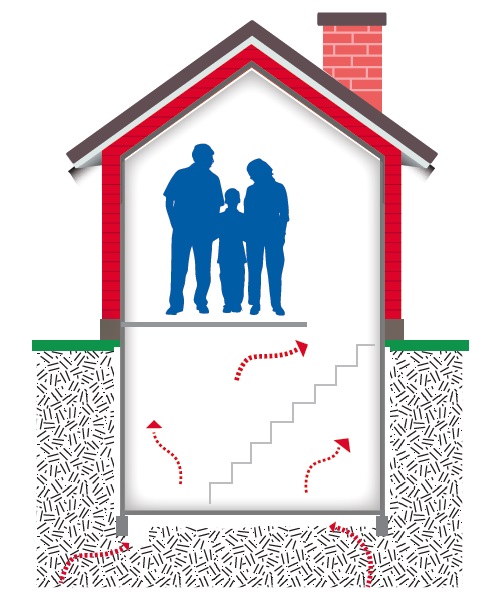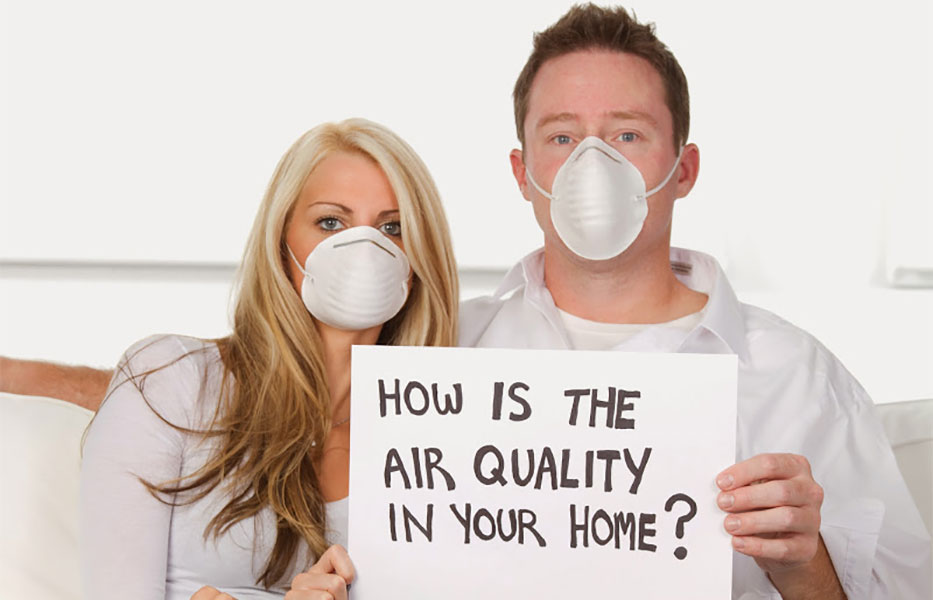Vapor intrusion—your newest unwanted guest
Home owners’ alert: beware of invisible intruders. Until recent years, you thought your greatest concern was over keeping the local bugs and varmints in their natural habitat—outdoors. But, no, the topic of the hour is air quality—the indoor type—and the concern is over the gases and chemicals that find their way indoors. Indoor air quality varies from day to day from the normal fluctuations of the world around us, the temperature, humidity, and ventilation, as well as the interactions and behaviors of the people, pets, and pests that inhabit the building. That means the chemicals and household products that are brought into the home or building—they influence the air too but these are not as concerning as those that seep through structural openings such as foundation cracks, sewers, and sumps. Earlier this year, the EPA named January as National Radon Action Month to educate the public about the health risks associated with exposure to this naturally occurring gas. In February of 2017, the Star Tribune ran a story about hundreds of homes in Minnesota affected by man-produced chemical vapors. Both of these articles discuss a category of pollution that is much harder to detect and less-well known—vapor intrusion. So, what is this all about and why should we be concerned?
First, let’s talk about radon. Radon is a colorless, odorless, tasteless gas produced by the breakdown or decay of uranium and thorium. These are elements that are commonly found in the earth’s crust, worldwide. When the gas is released it moves through the soil to the surface where it harmlessly dissipates into the atmosphere. The concern over radon gas is when it builds-up under foundations of homes, schools, and other buildings which may cause it to seep into their indoor air through cracks and openings. This news first became public in the 1980s; since then, scientists believe that long-term exposure results in lung cancer making it the second leading cause. Michael Dinger offers insight for the homeowner into radon awareness and detection and how to deal with this should you want to buy or sell real estate. For his discussion go here and for additional information about radon and real estate transactions in Minnesota, go here.
 Indoor contaminants are always bad, however, vapor intrusion is another matter; there is nothing natural about the elements involved here. The Agency for Toxic Substances and Disease Registry defines vapor intrusion as, “the migration of vapor-forming chemicals and gases from any subsurface source into indoor air.” (p2) These vapor-forming chemicals are volatile organic compounds (VOCs), chemicals that off-gas or are released into the air as a gas, and are found in many products used to build and maintain homes as well as in commercial and industrial businesses. Common products are gasoline fuel and petroleum products, dry cleaning solvents, and industrial de-greasers that may be found at industrial and military sites, dry cleaners, and gas stations. Any place where these may spill on the ground, leak from underground storage tanks or are dumped and not cleaned up will off-gas and find their way into buildings, contaminating indoor air. These vapor intrusion chemicals are not visible, are usually not detected by smell, and have been found to be more harmful breathed in than ingested through contaminated water. This is a complex problem that is found wherever there is an urban environment.
Indoor contaminants are always bad, however, vapor intrusion is another matter; there is nothing natural about the elements involved here. The Agency for Toxic Substances and Disease Registry defines vapor intrusion as, “the migration of vapor-forming chemicals and gases from any subsurface source into indoor air.” (p2) These vapor-forming chemicals are volatile organic compounds (VOCs), chemicals that off-gas or are released into the air as a gas, and are found in many products used to build and maintain homes as well as in commercial and industrial businesses. Common products are gasoline fuel and petroleum products, dry cleaning solvents, and industrial de-greasers that may be found at industrial and military sites, dry cleaners, and gas stations. Any place where these may spill on the ground, leak from underground storage tanks or are dumped and not cleaned up will off-gas and find their way into buildings, contaminating indoor air. These vapor intrusion chemicals are not visible, are usually not detected by smell, and have been found to be more harmful breathed in than ingested through contaminated water. This is a complex problem that is found wherever there is an urban environment.
Environmental issues have come into the news only in the last few decades. As government and environmental agencies become more aware and more involved, more has been learned about contaminants and the clean-up process. The most common solution for vapor intrusion is the same system that is used to reduce radon gas found in the home. It is called a radon mitigation system. The EPA website describes it as removing “…soil vapors from below basements or foundations before they enter homes. Vapors are vented outside of the homes where they are dispersed and harmless.” For more information about mitigation, see the EPA’s “A Citizen’s Guide to Vapor Intrusion Mitigation” here. The Minnesota Department of Health and the Minnesota Pollution Control Agency also provide information and resources about hazardous sites, what you need to know, and vapor intrusion, screening, and issues. We use hazardous materials safely every day at our jobs and in and around our homes. Stay knowledgeable, stay healthy, and stay safe.
Photo Credit: allseasonscomfortsystems.com
Minnesota Department of Health

